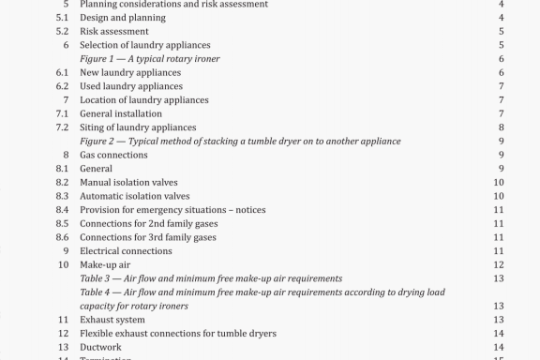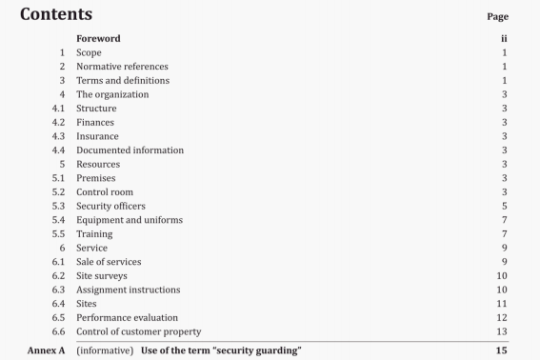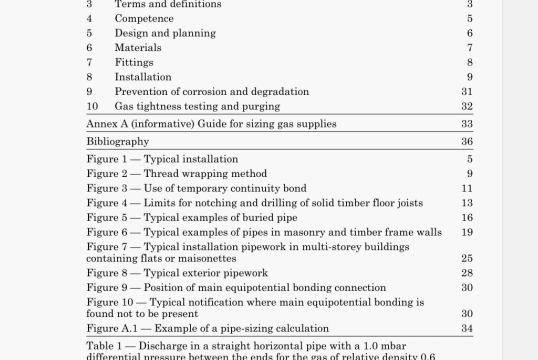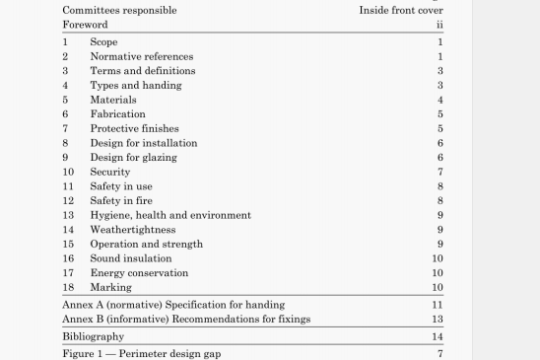BS ISO 9533:2010 pdf download
BS ISO 9533:2010 pdf download.Earth-moving machinery —Machine-mounted audible travel alarms and forward horns -Test methods and performance criteria.
4.5 Engine rotational frequency indicator with an accuracy to within ±2% of the indicated engine
rotational frequency.
4.6 Thermometer for measwenient of ambient temperature accurate tO within ±2 C.
NOTE Apparatus will also be needed for chedcing the test environment (see 5.1).
5 Test environment
5.1 Test area
The test area shall consist of a free field above a hard reflecting plane no rougher than non-porous asphalt. The test area bordered by the machine and the microphone shall also consist of a flat, horizontal surface or surface sloping downwards away from the centre of the test area, No reflective opiects such as buildings should be within 30 m of the microphone or the machine being measured,
The test technician or test equipment shall be >2 m from the sound-measuring microphone during exterior location measurements.
NOTE For further detads giving the reconirnended test area confuration, see ISO 3744 and ISO 6393.
5.2 Background noise
The ambient A-weighted sound pressure level due to sources other than the earthmoving machinery under
test, including wind effects, shall be at least 10 dB lower than the lowest measurement of interest,
5.3 Climatic conditions
Measurements shall not be carried out when precipitation. e.g. rain, snow or sleet, is falling or when the ground is snow-covered. The ambient temperature shall be within a temperature range -10C to +35C.
NOTE For further detads giving recommended cdimetic conddlone, see ISO 6393.
5.4 Wind
The average wind speed at the test site shall be less than 8 mis.
Wind speeds at each measurement location due to machine operation should also be below 8 mis. For measurement locations where wind speeds are above this value, sound measuring equipment designed for high wind applications should be used.
6 Machine preparation
6.1 Voltage
Verify that the alarm activation voltage to the audible travel alarm(s) or forward horn Is within the nominal
operating voltage specified by the manufacturer of the travel warning alarm(s) or forward horn.
6.2 Engine and transmission
6.2.1 General
Under prevailing conditions, the machine shall be at a stabilized temperature for all its primary power systems at maximum governor engine speed (high idle).
6.2.2 Cooling syst.m fan sp..d(s)
If the powertrawi or hydraulic system or systems of the machine are fitted with an adjustable fan or fans, they shall operate during the test at maxrnum achievable fan speed at the engine speed as specified in Clause T
It equipped with an electric tan or tans, these shall be off when taking sound pressure measurements with the engine off.
63 Equipment and attachments
For testing, the equipment and attachment(s) for the most typical machine configuration as specified by the machine manufacturer shall be installed and in the carry position for travelling (see ISO 5006). The attachment position shal also be as specified by the manufacturer.
6.4 Operator station
6.4.1 HeatIng, ventilation and air-conditioning system
If the operator station is equipped with a heating, ventilation and air-conditioning (HVAC) system or systems, these shall be set to mid-setting during all tests, defined below. The ventilation ducts shall be open with the air flow directed out but away from the operator.
— For an Off/Low/High system, at mld.setling the HVAC fan selling(s) will be at HigIi”.
— For an Off/Position 1/Position 2/PosItion 3 system, the mid-setting will be PosItion 2.
— For a continuously variable system, the mid-setting is at or above 50 % of the maximum fan speed.
If the HVAC system consists of multIe systems, e.g. separate upper and lower controls, all systems shall be set to mid.setling
NOTE For fiwlher details on fan speed and fan setlings. see ISO 6393
6.4.2 Operator siz, and location
For testing at the location of the operator, an operator should be selected whose physical dimensions are as close as possible to a medium operator, and within the linits for a small to a large operator, as defined in
ISO 3411.
The seal shall be positioned In the mid-position for fore and aft and for vertical height, If adjustment is provided. The seat and head rest, if present, shal be adjusted to accommodate the operator and shall remain consistent dunng the test senes.




